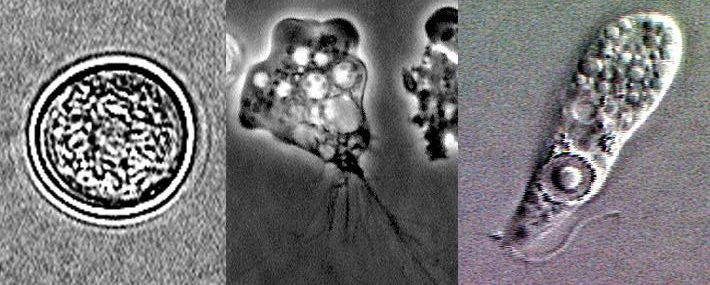
Details of Kerala Brain-Eating Amoeba
Introduction
Naegleria fowleri, commonly known as the brain-eating amoeba, is a free-living microscopic amoeba found in warm freshwater environments. Although rare, infection with this amoeba is almost always fatal. It has been reported in various parts of the world, including Kerala, India. This guide provides details about the amoeba, its infection process, symptoms, treatment, and precautions.
What is Naegleria fowleri?
Naegleria fowleri is an amoeba that thrives in warm freshwater bodies such as lakes, rivers, hot springs, and poorly maintained swimming pools. It can infect humans when contaminated water enters the nose, usually while swimming or diving. The amoeba then travels to the brain, causing primary amebic meningoencephalitis (PAM), a severe brain infection.
How Does Infection Occur?
Infection typically occurs when water containing the amoeba enters the body through the nose. Once inside the nasal passages, Naegleria fowleri travels to the brain along the olfactory nerve, where it destroys brain tissue.
Symptoms of Infection
Symptoms of Naegleria fowleri infection usually appear within 1 to 9 days after exposure and can include:
- Severe headache
- Fever
- Nausea and vomiting
- Stiff neck
- Sensitivity to light
- Confusion or altered mental state
- Loss of balance
- Seizures
- Hallucinations
The infection progresses rapidly, often leading to death within about 5 days after symptoms begin.
Diagnosis and Treatment
- Diagnosis: Early diagnosis is challenging due to the rarity of the disease and similarity to other conditions. It involves testing cerebrospinal fluid (CSF), brain imaging, and tissue biopsies.
- Treatment: There is no guaranteed cure, but early and aggressive treatment with a combination of drugs (e.g., amphotericin B, miltefosine, rifampin) may improve survival chances. Induced therapeutic hypothermia has also been used in some cases.
Precautions to Prevent Infection
Preventing Naegleria fowleri infection involves minimizing exposure to contaminated water:
- Avoid Freshwater Activities: Refrain from swimming, diving, or engaging in water sports in warm freshwater bodies, particularly during high temperatures.
- Use Nose Clips: If engaging in freshwater activities, use nose clips to prevent water from entering the nasal passages.
- Avoid Disturbing Sediment: Do not stir up sediment in warm freshwater as the amoeba may reside in the bottom layers.
- Use Properly Chlorinated Pools: Ensure that swimming pools and hot tubs are well-maintained and properly chlorinated.
- Avoid Water Entering the Nose: When using tap water for nasal rinsing or religious practices, use only distilled, sterile, or previously boiled water.
Public Health Measures
Public health authorities in Kerala and other regions with reported cases should:
- Raise Awareness: Educate the public about the risks and preventive measures for Naegleria fowleri.
- Monitor Water Bodies: Regularly test freshwater bodies for the presence of the amoeba, especially during warm months.
- Issue Advisories: Provide advisories and guidelines during outbreaks or high-risk periods.
Conclusion
While Naegleria fowleri infections are rare, they are deadly and require urgent attention. By taking appropriate precautions and raising awareness, the risk of infection can be minimized. If you suspect exposure or experience symptoms after engaging in freshwater activities, seek medical attention immediately.
Stay informed and stay safe.
Rewards for Champions App Review

ZGXdNefu